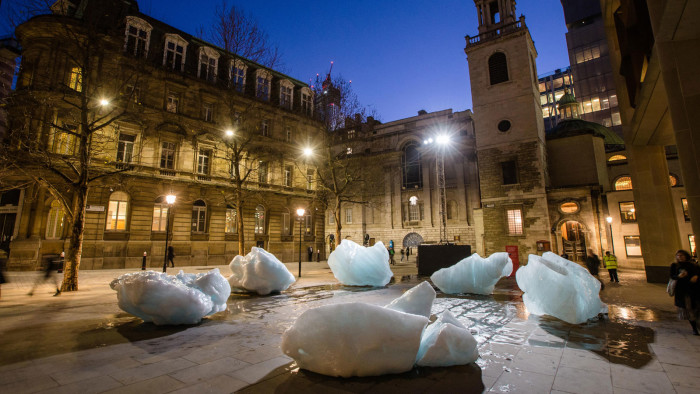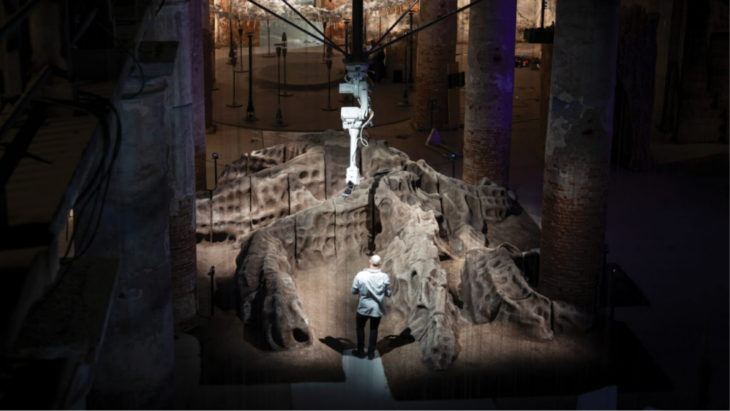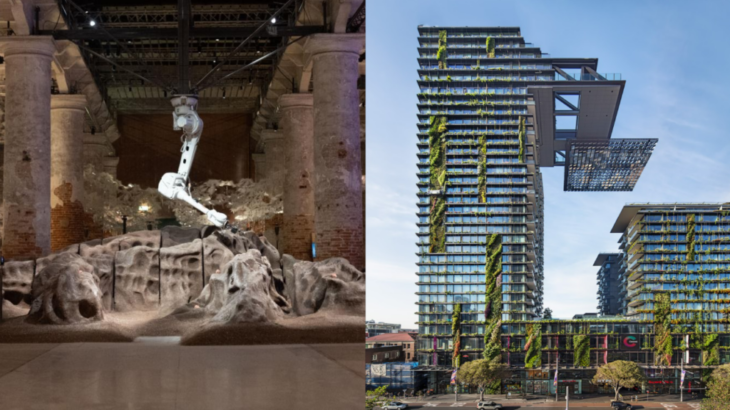Within the recent decades, the intensifying climatic anomalies have been prevalent throughout the world. Causing havoc, disrupting economies and natural habitats as well endangering natural and human lives. Human activity has fundamentally increased the concentration of greenhouse gases on the earth’s atmosphere, warming the planet, and causing disruption on earth’s balanced natural cycle.
In our Study Book “Being Ecological´´ written by Timothy Morton the author makes an effort to expand the genre and the idea of “Being Ecological´´.
The literal definition of Ecology is “Study of the House´´ and the definition of Ecology is: The Scientific Study of the interaction among organisms and their environment. The factoid term coined by Norman Mailer is related with the target of the book being ecological: factoid is an invented fact believed to be true because it appears in print. To rescue this idea of factoid is a good point to understand how Timothy Morton explains the concept of being ecological and the idea of ecology.

figure 2: Eliasson, O. (n.d.). Ice-watch installation. Olafur Eliasson. Retrieved
In order to explain this idea of factoids, we can find some examples as “ within the next two decades, global temperatures are likely to rise 1.5 degrees ´´ or “ Antarctica is losing 151 billion tons of ice a year ´´ or “ Plastic production and use is projected to double in the next 20 years and quadruple by the early 2050s ´´. This is a factoid because this is the type of data that we receive constantly. This data bombardment makes us believe that this data is certain and we take that as a verified fact.
In contrast to factoid, there are more functional ways of sharing this information. The tangible experiences to transmit the same ideas are a good option. One example of that is the Ice Watch Installation by Olafur Eliason, installed in London 2014 in which he tries to explain the same global warming concept.
“Facts go out of date all the time, especially ecological facts, and especially, out of those, global warming facts, which are notoriously multidimensional and scaled to all kinds of temporalities and all kinds of scenarios.” (Morton Timothy, Being Ecological, 2018, pg 22)
According to Morton, factoids are not ecological. Several examples of architecture based on factoids can be seen, of various scales and functions. Theo focus should not be on the data, hoping that the buildings will become ecological eventually. The buildings need to be designed with an ecological mindset from the conceptual stage.
Historical Precedents
Our understanding of ecology has been affected by the perception that humans and nature are separate and disconnected entities which is the main issue of the Anthropocene. Before Judeo-Christian values were installed more than two centuries ago, pagan beliefs guided societies. These beliefs set nature as sacred. Society was ruled by gods and earth spirits.. Humans were deeply interconnected with the spiritual world and nature. Despite this interconnection, the mere establishment of nature as something sacred would contribute to perceiving it as something external or separate. (Alberro)
After pagan beliefs, Judeo-Christian religious values were reigning over western society. In the book of ‘Genesis’ , God created the heavens and the Earth and then he created men in his own image and gave them dominion over the Earth. (Co.) These religious values established modern anthropocentrism which set humans as the dominators of Earth, it sets humans as superior beings over non-humans. This is what forms the separation that concludes into this wrongful perspective of ecology and furthermore has resulted in the current global ecological crisis. (White)
Parameters of being ecological
To further understand and critically analyse the ecological being of architectural projects we have set five parameters that have to be achieved. Firstly, we should forfeit the idea that nature is something sacred, untouchable and separate from us. The second parameter is to promote collaboration between different species (nature, humans and technology) to further promote the interconnection that exists between ecological beings. Thirdly, to use biodegradable and temporal materials that will act as facilitators for growth and will be a nurturing force. The fourth parameter is to grow further away from design methodologies strictly focused on problem solving, based on factoids, and therefore concentrate on proposals that favour interconnection and tangible experiences. The fifth and last parameter is to design with growth in mind, spaces that are not passive but on the contrary, interactive spaces that are alive, can evolve and decay without human control.

figure 3: own
Research question
How is being ecological reflected in architecture, according to Morton’s philosophy? What does it mean to be ecological?
To understand this we need to completely shift our perception of ecology, understand that there is no separation between living organisms and that we are interconnected by default. Consequently, our spaces have to change as well. Responsive and adaptive buildings must seek to be integrated into the biological and metabolic cycles of their environment. Architecture must go from a passive and parasitic attitude to an active and regenerative attitude.
Hypothesis
One of the manners to be ecological is by applying the views of Morton to use soil in the work of architecture, and understanding how It can be a decisive facilitator in bringing ecology into spatial experiences. A facilitator from definition helps to bring about an outcome or change by providing indirect assistance.
On the basis of parameters defined for understanding ecological architecture, Soil can be a mediator for architecture that enables the symbiotic system of interactions between life forms and their habitats. It can help us understand that we are already ‘being ecological’, in a tangible manner.
Various precedents of soil being used in order to strive towards ecological architecture has been explored. In most references, soil has been used in a symbolic manner. “New York Earth Room” an installation by artist Walter de Maria aimed at exploring the links between art and the natural environment. Usually humans don’t bring soil indoors, and soil indoors is perceived as ‘dirt’. This perception of soil is questioned in this symbolic installation. In Tarkovsky’s movie ‘Stalker’, it is illustrated that the essence of man is his connection with nature . It is an intrinsic part of human psychology. IaaC’s project ‘Terraperforma’ focuses on large-scale 3D printing soil structures. Although unfired clay is used in a climate performative design, as per Morton, this is not ecological architecture as it doesn’t conform with the ecological aforementioned parameters. French philosopher Bergson wrote extensively about Elan vita, an idea which explains the goal of evolution. Bergson portrays it as an intuitive perception of experience, the characteristic of all species to be responsible for growth. Bergson and Morton’s views help us realise that a performative, rather than symbolic use of soil is ecological. Soil can thus be a nurturing force to drive a change in our mindsets, society and spatial context.
Case Study
For our case study, we chose the project ‘Magic Queen’ presented at the 2021 Venice architecture Biennale, conceived by MAEID. It is a 3D printed landscape cared for by a robotic gardener. The project explores the deeper meaning of the relationship between nature, technology, and living systems. The primary material used in the project is soil which was seeded with different types of grasses and inoculated with mushroom spores during and post-fabrication.The ABB robot suspended over the soil structure scans the topography and monitors the soil ecosystem.

figure 4: Stevens, Philip. “’Magic Queen’ Is a 3D Printed Soil Landscape Cared for by a Robotic Gardener.” Designboom, 29 June 2021
We have analysed this project in reference with the five aforementioned parameters for being ecological.
The first parameter being, forfeiting the presumption of nature as something that is sacred or untouchable. The complex structure of the soil is fabricated by architects who 3D print the digitally designed geometries through an intelligent design to fabrication workflow. The use of biodegradable hydrogels that act as the binding agent for the structure helps to achieve the desired form. Following the printing process, the loose soil is removed manually and the hardened part is left behind. To sustain ecological patterns within the biosphere without altering them through human intervention has become increasingly more complex and challenging. Hence, the project equips us to promote the autonomy of environmental processes and non-human species by using novel technologies. The objective of the design is to allow humans to initiate the process, while nature and the robot takes its course after.
The second parameter is the collaborative design approach amongst humans, technology and other species.‘Magic queen’ represents a hybrid environment that helps to create an ecosystem of empathy and co-existence. Nothing in magic queen could exist without the presence of the other. The fungal flora and the soil structure depend on the robot to water them, at the same time, the robot relies on its existence to move. The projects provokes us to reinterpret architecture, not as a dead entity but a living system
The following parameter is “The use of materials in design that are biodegradable, temporal, facilitate growth and nurture life”. The Magic Queen is a project based on organic materials that integrates biochemical processes and technology to reproduce and condition the growth of natural elements. The human inputs complement the growth and nurture life. As a temporary installation, it is easy to see that the space-time factor is key in the design. All the materials used are biodegradable and are transformed during the biennale, making the project evolve every day.
The next parameter related to Timothy Morton’s argument is “Non factoid architecture”. The landscape, controlled by robots, uses the data recollection to foment the growth of the natural elements. The designers avoid the use of factoids to define the growth, the installation is a responsive experiment. Sensors and the information extracted from the intelligent machine creates powerful feedback to the designers.
The last parameter is “Design that facilitates the unpredictability of its evolution and is liberated from human control” . The project aim is to obtain outcomes for all living forms. The use of soil in the project allows the designers to set new physical and powerful parameters such as decay and aging. The plants and mushrooms growth facilitate the evolving ecosystem, transforming the experience.

figure 5: Stevens, Philip. “’Magic Queen’ Is a 3D Printed Soil Landscape Cared for by a Robotic Gardener.” Designboom, 29 June 2021
If we compare the project of the Magic Queen with a green architecture project, the differences are evident. Rather than focusing on factoids to achieve sustainability ,which may be misunderstood, ‘Magic Queen’ changes our perspective of the ecosystem, defining a new manner to conceive spaces.Conventional ‘green’ architecture stresses on achieving certain arbitrary parameters in order to be accredited. This is in response to the system which withholds an anthropocentric point of view.
Our critique of Magic Queen is as follows, the project that has been designed by our preconceived notion of how landscape is perceived. The project is not imaginative in the development of its form, it resembles a conventional mountainscape. It’s prevalence in dense urban societies could be explored further. We believe architects of this generation can further research into this topic and create a new type of landscape integrating ‘bio-scape’ and ‘man-scape’.
Perspective
If we try to go further with the statements explained, we consider that it would be interesting to apply the whole described transformation in all the scales of the human developed systems. Understanding the power of the concept of Dark Ecology, and applying the philosophy in a new and integrative urban design, could be a trigger factor to change our social and political systems.
List of References
- Harman, Graham. “Time, Space, Essence, and Eidos: A New Theory of Causation”, Cosmos and History: The Journal of Natural and Social Philosophy, vol. 6, no. 1, 2010.
- Harman, Graham. “The Problem with Metzinger”, Cosmos and History: The Journal of Natural and Social Philosophy, vol. 7, no. 1, 2011.
- Hörl, Erich. “Introduction to general ecology: The ecologization of thinking.” In General Ecology: The New Ecological Paradigm. London: Bloomsbury Publishing Plc. 2017.
- Kolozova, Katarina. Cut of the Real: Subjectivity in Poststructuralist Philosophy. New York: Columbia University Press, 2014.
- Rosa, Hartmut; Henning, Christoph; Bueno, Arthur. “Introduction” in Critical Theory and New Materialisms (ed. Rosa, Hartmut; Henning, Christoph; Bueno, Arthur). London: Routledge, 2021.
- Schmarsow, August. “The Essence of Architectural Creation”, in Empathy, Form, and Space: Problems in German Aesthetics, 1873-1893, London: Getty Center for the History of Art and the Humanities, 1993.
- Sharov, Alexei. “Composite Agency: Semiotics and Modularity and Guiding Interactions”, Biosemiotics, n. 10, 2017.
- Spinoza. Ethics Demonstrated in Geometrical Order. Ed. Jonathan Bennet, 2017.
- Stevens, Philip. “’Magic Queen’ Is a 3D Printed Soil Landscape Cared for by a Robotic Gardener.” Designboom, 29 June 2021
- Bushwick, S. (2019, June 12). Watch a raging forest fire surround you in 360 degrees. Scientific American. Retrieved November 15, 2021
- Walter De Maria, The New York Earth Room, 1977
- Henríqueza, M. (2020, November 18). A Pesar de la destrucción que provocan, Este es el lado bueno de los huracanes en la naturaleza. Semana.com . Retrieved November 15, 2021
- IAAC, TerraPerforma, 2006
- Bergson, Henri, 1859-1941. ([1973]). La evolución creadora
- Tarkovsky, Andrei. Stalker, 1979
- Alberro, Heather. “Humanity and Nature Are Not Separate – We Must See Them as One to Fix the Climate Crisis.” The Conversation, 17 Sept. 2019
- Co., Alabaster. Book of Genesis – Alabaster Bible. Alabaster Co., 1906.
- White, Lynn. “The Historical Roots of Our Ecological Crisis.” Science, vol. 155, no. 1203–1207, 1967
“An Ecology of Soil. Towards a non-factoid architecture” is a project of IAAC, the Institute for Advanced Architecture of Catalonia, developed during the Master in Advanced Architecture (MAA01) 2021/22 by students: Ariadna Giménez, Marta Navarro, José Manuel Asensio, Diego Vázquez , Neha Jayanth Pattanshetti, Vasudha Karnani; and faculty: Manuel Gausa, Jordi Vivaldi.
